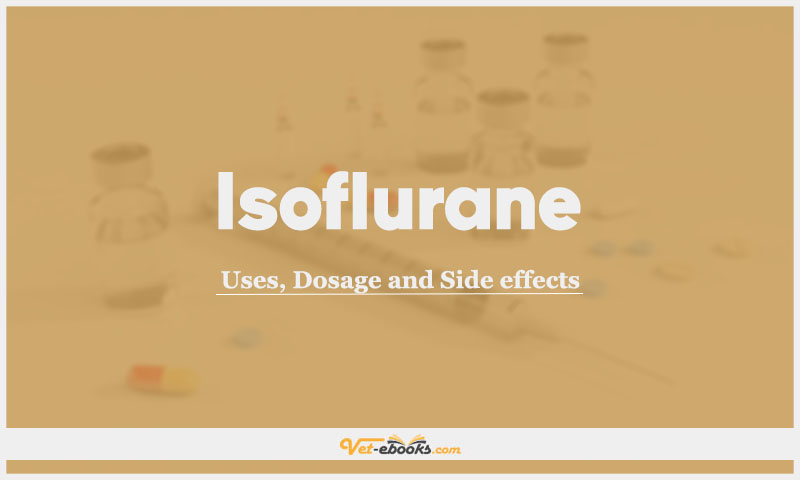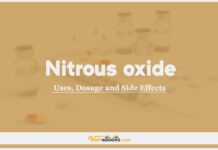Isoflurane: Uses, Dosage and Side Effects

Overview
- Volatile anaesthetic agents.
Uses of Isoflurane
- Induction and maintenance of anaesthesia
Dose of Isoflurane in Dogs and Cats
Dogs:
- The expired concentration required to maintain surgical anaesthesia in 50% of dogs is 1.2% (minimum alveolar concentration).
- Administration of other anaesthetic agents and opioid analgesics reduces the dose requirement of isoflurane, therefore, the dose should be adjusted according to individual
requirement. - 3–5% isoflurane concentration is required to induce anaesthesia in unpremedicated patients.
Cats:
- The expired concentration required to maintain surgical anaesthesia in 50% of cats is 1.6% (minimum alveolar concentration).
Drug Dosage Calculator
You Should Give:
Side Effects of Isoflurane in Dogs and Cats
- Isoflurane induces dose-dependent hypotension via vasodilation, especially in skeletal muscle.
- This negative effect does not diminish over time.
- Isoflurane is a more potent respiratory depressant than halothane, and dose-dependent respiratory depression is observed.
- Isoflurane does not sensitise the myocardium to catecholamines to the same extent as halothane, but it can produce arrhythmias under certain circumstances.
- Isoflurane is not metabolised by the liver (0.2%), and it has a smaller impact on hepatic blood flow than halothane.
Contraindications of Isoflurane in Dogs and Cats
- No information is available.
Some Notes:
- Sedatives, opioid agonists and N2O reduce the concentration of isoflurane required to achieve surgical anaesthesia.
- The duration of action of non-depolarizing neuromuscular blocking agents is longer with isoflurane compared with halothane anaesthetized animals.
Tip
Do You Want To Increase Your Veterinary Knowledge and Practical Skills?
You Can Now Browse and Download +3000 Books For Veterinary Professionals & Students Online.
Download Veterinary Books




















